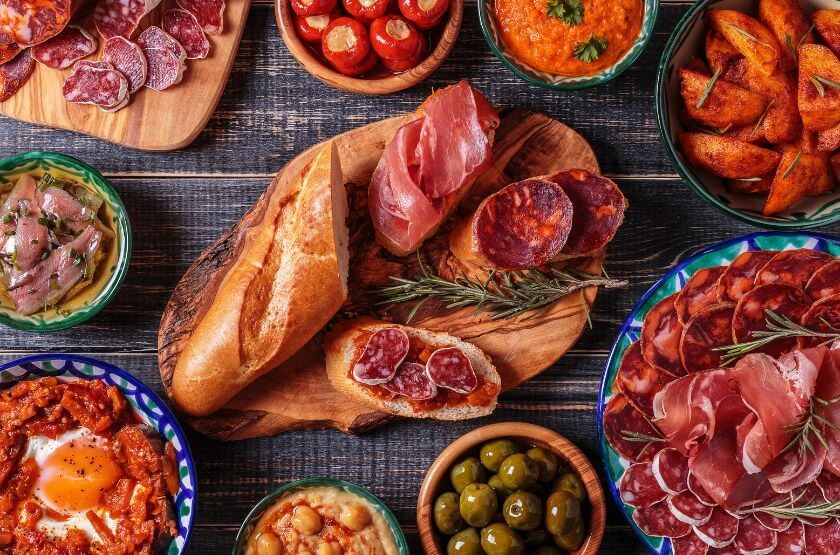
Tapas is a popular style of dining in Spain that involves small, appetizer-sized dishes, often served with drinks. The history of tapas is deeply rooted in Spanish culture and has evolved over centuries. Here is a brief overview of the history of tapas:
Origins
The origins of tapas can be traced back to the 13th century in Spain. At that time, it was common for travelers and farmers to stop at taverns along their journeys. These taverns served wine, and to prevent flies and other insects from landing in the glasses, the bartenders would cover them with a small plate or “tapa” (which means “lid” or “cover” in Spanish).
Early Development
Over time, the practice of covering wine with a plate became more widespread. Tavern owners realized that serving small snacks alongside the wine helped enhance the taste and experience. These snacks would range from simple items like olives, cheese, or cured meats to more elaborate preparations like stews, seafood, and other regional specialties. The variety of tapas offered depended on the region and the ingredients available locally.
Popularization
During the 19th century, tapas gained popularity among the working class in Spain. Workers would visit taverns after a long day’s work to socialize and enjoy a drink or two. The tapas provided sustenance and helped counterbalance the effects of alcohol. This social aspect of tapas, where people would gather and share small plates, became an integral part of Spanish culture.
Modern Evolution
In the mid-20th century, tapas underwent a transformation and began to be served in bars and restaurants as a standalone culinary experience. The dishes became more diverse, elaborate, and creative, reflecting the growing sophistication of Spanish cuisine. Tapas bars started specializing in serving a wide range of small plates, allowing patrons to sample various flavors and textures in one sitting.
International Popularity
In recent decades, tapas have gained immense popularity beyond Spain. Spanish restaurants around the world serve tapas as a way to introduce people to the rich flavors and vibrant culinary traditions of the country. Tapas have become a trendy dining option, and their small portions make them ideal for sharing and exploring different tastes.
Today, tapas continue to evolve, incorporating influences from both traditional and contemporary culinary practices. The concept of tapas has expanded to include a wide range of dishes, accommodating various dietary preferences and fusing with international flavors while retaining its essence as a social dining experience.
Overall, tapas represent a significant culinary tradition in Spain, embodying the country’s love for good food, socializing, and the celebration of flavors in small, flavorful bites.


